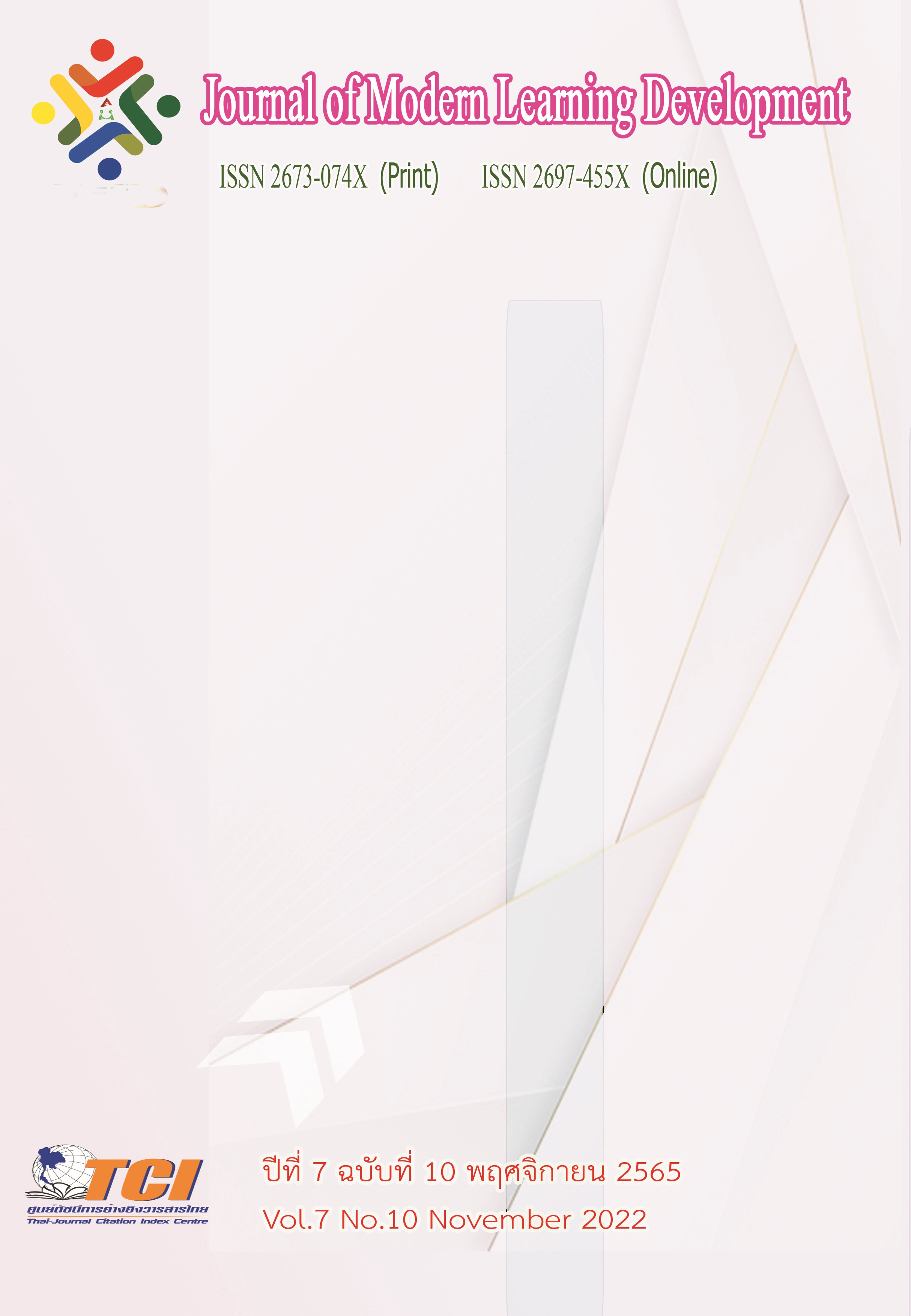Factors affecting engagement the organization of businessmen of the GiffarinenetworkGiffarine Skyline Unity Company Limited (Thailand)
Main Article Content
Abstract
The objectives of this research were 1) to study the factors supporting the organization of Giffarine network businessmen to Giffarine Skyline Unity Company Limited 2) to study the nature of the work that is binding on the Giffarine Network. The organization of businessmen of the Giffarine network Giffarine Skyline Unity Company Limited 3) to study the factors affecting the Binding to the organization of businessmen in the Giffarine network Giffarine Skyline Unity Company Limited. The sample group includes 400 businessmen of Giffarine Skyline Unity Network (Thailand) from Taro Yamane's formula by choosing convenience sampling by using a questionnaire as a tool. collect information and the statistics used in the data analysis were frequency, percentage, mean, standard deviation. and multiple regression analysis.
The results showed that All independent variables were able to predict variables based on the organizational commitment of the Giffarine network operators. Giffarine Skyline Unity Company Limited (Thailand) is an overall return of 6.69% and all independent variables can predict variables based on the organizational commitment of Giffarine network businessmen. Giffarine Skyline Unity Co., Ltd. (Thailand) towards the organization's positive say (Say) by 4.95%.
Article Details
References
วรรณวนัชดวงภมร.(2562). ความผูกพันขององค์กรของบุคลากรใรบริษัทยูนิคเอนจิเนียริ่งแอนด์คอนสตรัคชั่นจำกัด (มหาชน). ออนไลน์. สืบค้นเมื่อ 15 กุมภาพันธ์ 2565. แหล่งที่มา:https://mmm.ru.ac.th/ MMM/IS/vlt14/6114991061.pdf
ธนรัฐนาทอง. (2556). ปัจจัยที่มีผลต่อความผูกพันในองค์กรของพนักงานธนาคารออมสินภาค 5. ออนไลน์. สืบค้นเมื่อ 15 กุมภาพันธ์ 2565. แหล่งที่มา: http://www.sure.su.ac.th/xmlui/bitstream/
id/607f373f-6322-4070-8d60-1c882aaa1746/fulltext.pdf?attempt=2
ธิตานันท์พงศ์ละไม. (2560). คุณภาพชีวิตในการทางานกับความผูกพันของพนักงาบริษัทเบรนน์แท็ก (ประเทศไทย). ออนไลน์. สืบค้นเมื่อ 17 กุมภาพันธ์ 2565. แหล่งที่มา :https://archive.cm.mahidol.ac.th/
bitstream/123456789/2139/1/TP%20BM.002%202560.pdf
ปิยเชษฐ์เรืองไพโรจน์. (2548). การศึกษาปัจจัยที่มีผลต่อความผูกพันในองค์การของอาจารย์ คณะครุศาสตร์
มหาวิทยาลัยราชภัฏในเขตกรุงเทพมหานคร. วิทยานิพนธ์ปริญญามหาบัณฑิตสาขาวิชาครุศาสตร์
เทคโนโลยี. บัณฑิตวิทยาลัย: มหาวิทยาลัยเทคโนโลยีพระจอมเกล้าธนบุรี.
Aon Hewitt. (2015). Aon Hewitt’s Model of Employee Engagement. Online. Retrieved October 2020,From https://www.aonhewitt.co.nz/getattachment/77046028-9992-4d77-868a-32fbf622fec6/file.aspx
Tower Perrin. (2003).Working today: Understanding What drives employee engagement. Online. Retrieved October 2020, from http://www.towersperrin.com/tp/%20 getwebcachedoc?webc=hrs/usa/2003/200309/talent_2003.pdf
Gallup, & Harter, J. (2014). The 12 Elements of great managing. Online. Retrieved from
https://news.gallup.com/businessjournal/26281/first-element-great-managing.aspx
Greenberg. (2004). Behavior in Organization. New Jersey: Prentice Hall,Inc.
Hewitt Associates. (2004). Research Brief: employee engagement higher at double digit growth companies, at from www.hewitt.com.
Taro Yamane. (1973). Statistics: an introductory analysis. New York: New York: Harper & Row.


